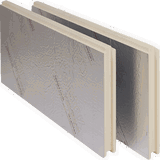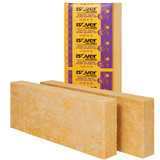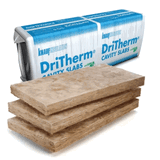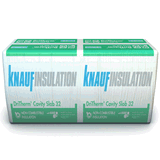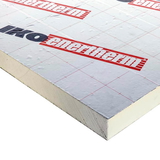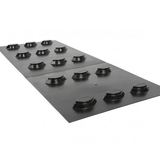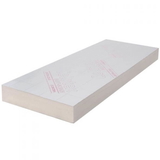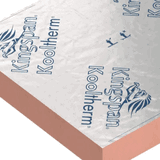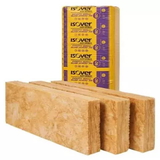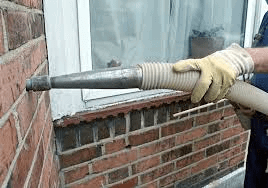- Blogs
- Problems with Cavity Wall Insulation
Problems with Cavity Wall Insulation
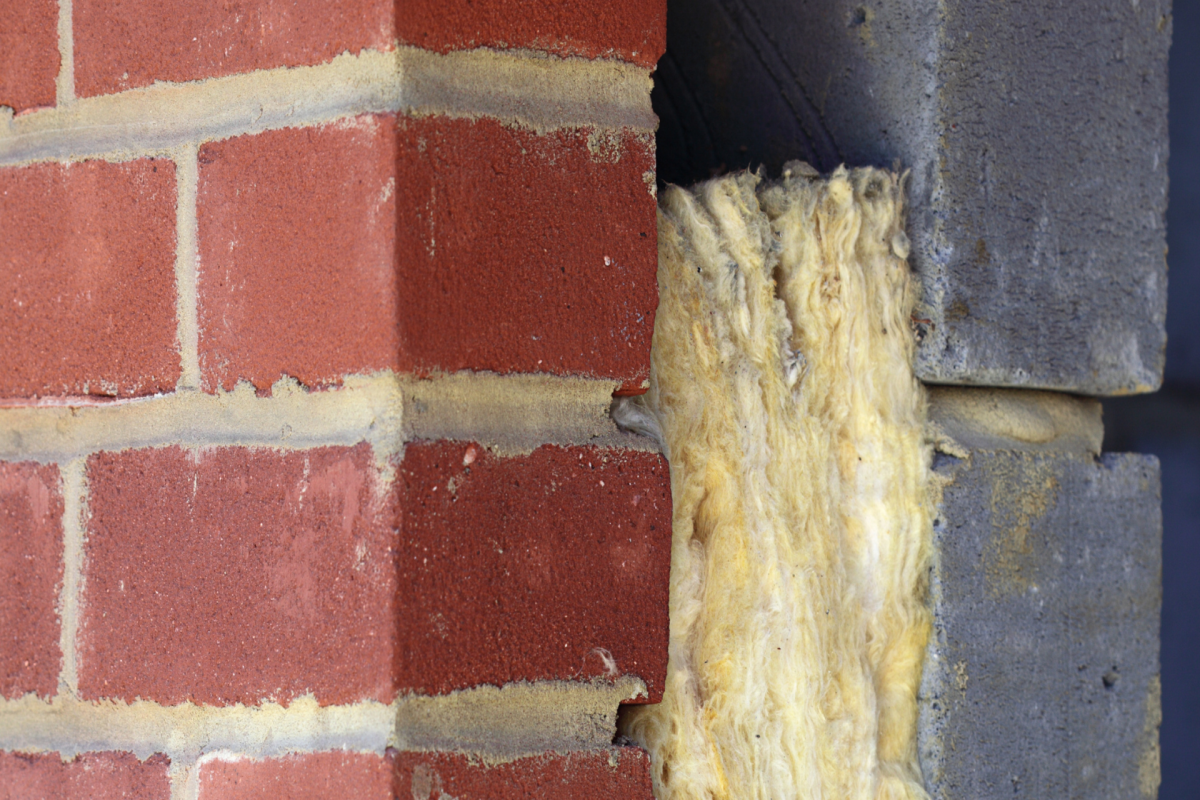
The government in the UK is looking for insulation to reach its carbon neutrality goal by 2050. In a bid to make it a reality, various steps have been taken, and many grants released. The main focus of all these schemes is to save wasted energy in the form of heat and make buildings more energy-efficient.
Cavity wall insulation is one such way to increase energy efficiency, and the authorities have mostly supported it. Cavity wall insulation is basically filling up the cavities, between the inner and outer leaves of brickwork, with insulating materials. It is a cost-effective solution to save energy and stop heat loss. However, there are problems with cavity wall insulation that you should be aware of before you install it.
In our last blog, we looked into the advantages of cavity wall insulation. We have discussed the different insulating materials used to insulate cavity walls and talked about recognised organisations for installing cavity wall insulation.
In this blog, we will be looking into the pros and cons of each of the insulating materials. We will also discuss some of the common problems associated with cavity wall insulation.
What causes the problem in cavity walls?
A typical cavity wall has two layers of masonry brickwork with a cavity between them. The problem with cavity wall insulation is very rarely with the insulation itself. More often than not, the issue stems from pre-existing conditions like defective walls, cracks in the brickwork, render disintegrating mortar or leaking gutters. Improper installation can also be the root cause of the problem.
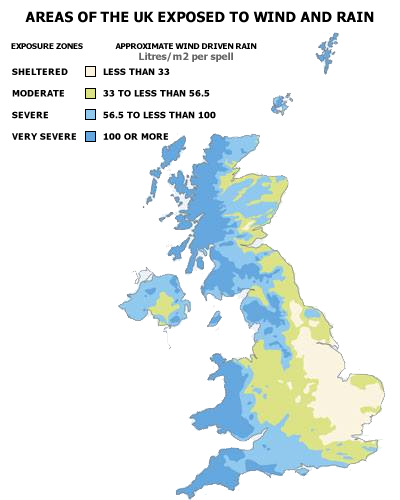
Another big contributing factor is driving rain, especially prevalent in Ireland, Wales and the West coasts of Britain. Particular caution should be taken in these areas as the walls of properties get battered by rain, leading to higher chance of water ingress into the cavity.
The primary reason for having cavity walls is to keep the water away from the internal, habitable side of the property. Water will get into the cavity if cracks exist in external walls. No matter what insulating material you choose, it will become redundant on continuous exposure to moisture. The insulation will soak up water, resulting in it ceasing to act like an insulator, mould infestation, wall tie failure and structural damage. No insulation is better than wet insulation.
All new builds will mostly have cavity wall insulation installed during the construction phase itself. The cavity wall insulation batts are designed to be as water-repellent as possible, which cannot be said of blown-in cellulose for example. This is probably why issues related to cavity wall insulation are of rare occurrence in new builds but a big problem in retrofitted wall insulation.
Before we dive into the problems with cavity wall insulation, let us look into the pros and cons of each insulating material used to insulate cavity walls.
Mineral Wool Cavity Batts:
Cavity Insulation batts made of mineral wool are a cost-effective and best solution for insulating cavity walls. At Buy Insulation online, we store cavity batts from top brands like Rockwool, Knauf and Superglass.
Pros of Mineral wool batt insulation:
- Cavity batts are the most efficient cavity insulation available.
- Cavity Insulation Batts can be installed in one day with little to no disturbance.
- The U-value is comparable with that of EPS beads.
Cons of Cavity Batt insulation:
You can get the most out of installing cavity batt insulation only with proper installation. It must be said that these types of wall insulation, either batts or PIR boards, are only going to be feasible in new builds or extensions etc as you would literally have to take the wall down otherwise to install them.
Even on new walls though, improper installation causes many problems that include:
- Damp Issues: Cavity batts made of mineral wool are water-resistant but not waterproof. If exposed to continuous moisture, the mineral wool will absorb water causing a substantial risk of water penetration into your home. Moisture can also cause mould growth and property damage.
- Sagging: Mineral wool can sag or slump over time or when they get wet. It creates gaps in the cavity walls, resulting in heat loss.
EPS Beads:
Small polystyrene beads are installed into the cavity by drilling holes in the walls and pumping the insulation in. This has to be carried out by professional insulation installers.
Advantages:
- It is a cost-effective way to insulate cavity walls.
- The polystyrene bead is very thin and small, which makes it ideal for narrow cavities. They can be installed using smaller, easily concealed drill holes, causing little harm to the walls.
- Installation can be completed in a day.
- It is helpful to achieve the required U-Value for cavity wall insulation.
- Polystyrene beads are water-resistant.
- It is easier to remove the insulation if needs be than say spray foam or cellulose.
Disadvantages of EPS bead:
- When not glued together, the beads may not stick with one another. They may be found leaking through vents or scattered on lawns. This implies there are gaps in the insulation and thermal bridges / heat losses as a result.
- When they get wet, EPS beads will retain a little moisture where each bead is connected to the next. They will dry out, the moisture is in constant supply then they will help hold water in the little gaps between them, making the property colder and damper than if it didn't have them at all.
- If the beads are glued together and too many of them are pumped in, they can exert positive pressure on the walls, causing structural damage.
Buy Cavity Wall Insulation Now!
Cellulose Insulation:
Cellulose is one of the most widely used insulating materials for cavity walls. Loose-fill cellulose is blown into wall cavities with sophisticated blowing devices. The plant fibres act as a good insulator, conforming to designated space without disrupting or dislocating anything.
Pros:
- It has a high R-value and is heat resistant.
- It is very cost-effective.
- It is environmentally friendly and long-lasting.
- Cellulose is insect and mould-resistant.
- Has much better acoustic insulation properties than any of the other types.
Cons: ![problems with cavity wall]()
- The most common complaint with cellulose insulation is that it sags and settles over time.
- During installation, it produces a lot of dust.
- Cellulose is not exactly water-resistant. A vapour barrier is a must if you are to install cellulose insulation.
Foam Insulation:
Foam insulation is one of the most common ways to insulate cavity walls. Polyurethane foam is sprayed into the cavities by drilling holes into the walls.
Advantages of foam Insulation:
- Foam insulation can be installed in a day.
- The use of foam insulation to seal a cavity helps to control moisture, lowering the risk of mould growth.
- With a Lambda value of 0.030 W/mK, polyurethane gives the best insulating value.
Disadvantages:
- The foam may contain harmful substances such as formaldehyde which could also be released while mixing the foam on-site.
- When the foam expands, it exerts too positive pressure on the walls of your home. Too much, therefore could potentially damage the structure, when not fitted properly.
- There is always a possibility of voids or gaps in the insulation, leading to heat loss.
- They are very difficult to remove, unlike EPS beads. To remove the foam, you must remove the wall itself. This is a nightmare scenario.
Common Problems with Cavity Wall Insulation:
1. Problems with inadequate ventilation:
As discussed previously in our blog, adequate ventilation is critical, along with the proper installation, to get the maximum out of insulating your home. The same goes for cavity wall insulation. If cavity wall insulation is not installed properly or does not have ventilation around, it will slump with time resulting in cold spots along the walls.
2. Condensation In cavity Walls:
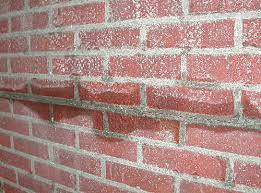 Condensation on cavity walls can be due to the following reasons:
Condensation on cavity walls can be due to the following reasons:
Interstitial Condensation: When the humid, warm air flows through breathable insulating material like mineral wool, for example, the moisture-laden air could reach its dew point, depositing water in the insulation itself. Water droplets that develop within the cavity cause structural damage, corrode the metal wall ties, decay timber frames and so on. These may not become apparent until the condition has deteriorated significantly.
Cold bridging: If the cavity contains sharp edges or rubble, this could cut into the insulation, forming gaps. These gaps result in heat loss and develop cold spots along the wall. When moisture-laden air comes into contact with these cold spots, they condense, leading to moulds and structural damage.
3. Dampness:
- Issues relating to moisture only arise if the cavity wall insulation is not properly installed or the cavities have pre-existing repairs that were not done before installing insulation. Water can get into the cavities if:
- Your home is in an exposed location, i.e. it is not immediately surrounded by buildings or trees.
- Your home is located in an area that experiences a lot of wind-driven rain such as Western coastal regions.
- The pre-installation check was not done right and failed to discover the cracks in the brickwork, mortar joints, render or if the external walls are badly constructed.
The insulation in the cavities will soak up the water, decreasing their performance and insulating properties. It can lead to sagging or slumping in the insulation, which will cause gaps, resulting in heat loss. Moisture is usually followed by moulds, which are potentially dangerous for occupants' health.
This is why a pre-installation survey is so important. Post-installation, it is critical to ventilate the area followed by routine property care, like repointing mortar joints and monitoring gutters regularly. Doing so will keep moisture at bay.
4. Rubble in Cavity Walls:
A Lot of cavity walls, especially on older properties are full of rubble and all sorts at the bottom. When insulation is installed in cavities, this rubble can allow moisture bridges to form, decreasing the insulation's effectiveness and performance. Also, the blown-in insulation may not fill up the cavity as expected if it's full of rubble.
5. Not sleeving sub floor vents:
Sub Floor vents are there to keep suspended floors in older properties free of damp and rot. Very commonly they form part of the main cavity. If these are blocked, then you are inviting wet and dry rot into your home which is a disaster. Cavity wall insulation installers should make sure these are sleeved before any insulation installation takes place.
6. Improper Covering of Drill Holes:
If insulation is installed by drilling holes, then these holes must be properly covered to reap the maximum benefits of the insulation. Poor cover-ups will not only look ugly, but they will also decrease the insulation effectiveness.
Replacing cavity wall insulation:
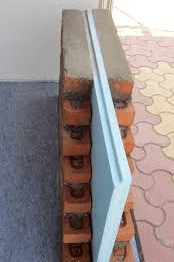 Some of the signs that your cavity wall insulation is not doing what it is supposed to do include:
Some of the signs that your cavity wall insulation is not doing what it is supposed to do include:
- Increased energy bills
- Wet or cold patches along the wall.
- Walls with peeling paint or peeling wallpaper
- Stains on the walls.
- Condensation on the wall, even if the room has proper ventilation.
- Moulds.
- A damp, lingering smell in your home
If you find these signs in your facility, then it is likely that the cavity wall insulation needs removing and replacing. This is again not a DIY job. Check with your installers to see if your warranty is still valid. This brings home why it's important to get a CIGA guarantee on your install, to make sure you have some form of protection if things go wrong. You need to get in touch with certified contractors to remove cavity wall insulation.
In Conclusion:
To get the maximum out of installing cavity wall insulation, you must install it properly. The installation will fail if the job was carried out by a cowboy contractor who did not follow instructions to the tee or if thorough pre checks were not done prior to installation. So, it is of utmost importance that you go through certified organisations such as CIGA to insulate cavity walls.
For superior-quality cavity batt insulation, visit Buy Insulation Online. We also store loft insulation, floor insulation, pipe insulation, and duct insulation materials from leading brands in the UK. We also supply valve jackets. By supplying quality insulation materials, we make buildings energy-efficient and by planting three trees per order, we make you carbon positive.

Samuel Hitch
Managing Director
Buy Insulation Online.
Leave A Reply
Your feedback is greatly appreciated, please comment on our content below. Your email address will not be published. Required fields are marked *
